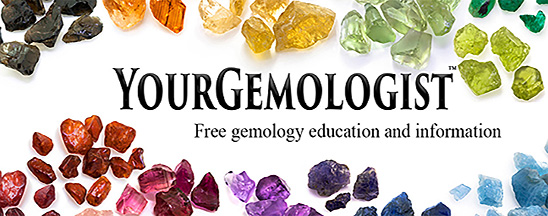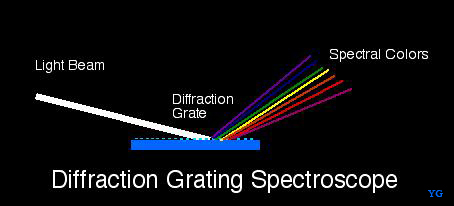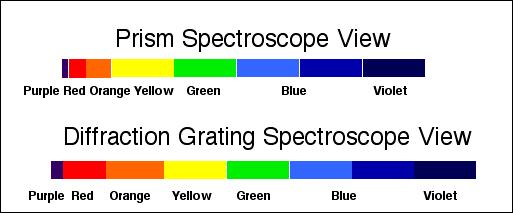 |
|
General Information What is it?: This handy piece of equipment is perhaps the most important tool in gemology, although GIA students generally get a limited exposure to its use. The spectroscope breaks up the light being transmitted from a gemstone into its spectral colors, which allows the gemologist to see the various wavelengths that are being absorbed by the gemstone. Thereby allowing the gemologist to know what elements are contained in the gemstone that are causing the absorption. Making this one of the most important tools in identifying gemstones. How does it work?: Elements within a gemstone will absorb certain levels of energy. And light is energy. Therefore certain elements in a gemstone will absorb certain colors of light based on what energy level they are absorbing. The spectroscope allows us to see which color of light, or energy, is being absorbed, thereby allowing us to know what elements are in a gemstone. This, in turn, allows us to know more about the gemstone, ie...identification, where it came from, what causes it to have color, etc.... When you look through a spectroscope you will see lines or bands missing from the colors. This is where elements within the stone have absorbed that level of energy or light, letting us know that the element exists within the stone. Here is an example of the absorption spectrum of zircon:
Here is an absorption spectrum of almandine garnet:
The wavelengths of light are measured in nanometers. Abbreviated nm. These number are applied to the scale of the spectrum as a guide to show what wavelengths are being absorbed. It should be noted that gemologists should learn to use the spectroscope without having these numbers necessary. Since most hand held spectroscopes will not have these scales visible through the unit. So know where the numbers are, but learn to use your spectroscope without the need to have them visible.
You can see that the elements contained are very different. You can also see why you can identify many gemstones with nothing more than a spectroscope based on the elements contained in them. What is the story behind the spectroscope?: There are two types of spectroscope. The prism and the diffraction grating. The prism spectroscope is composed of three optical grade glass prisms in optical contact with each other as shown below, and the diffraction grating spectroscope uses a diffraction plate to break up the light beam. Here is how the two types work: Prism Spectroscope
The prism spectroscope will squeeze the red end of the spectrum making it difficult to see some of the absorption lines in that end. However, the prism models will usually have a focus slide control and a light slit control that allows for adjustments in the amount of light entering the unit. Diffraction Grating Spectroscope
The diffraction grating unit will show a uniform spectra across the enter band. Making the red end of the spectrum far easier to read than the prism.
There are many models of the spectroscope available. From the hand held version as shown at the top of this page which is a hand held diffraction grating model. To the large table top models with lighted scales that you can see through the view hole. Most gemologists should learn with a hand held model without the scale...so you will be able to use it in the field without the need for the big expensive model that you cannot carry. To learn more about the Spectroscope we invite you to join us for the study of gemology with the: |
© Copyright 2014 All Rights Reserved. Please read the fine print below: The information contained in this website is offered free of charge to anyone wishing to learn more about gemology. The information may be downloaded by any student, consumer, or jeweler for your own personal study and use. None of this site can be downloaded for posting on another website or server for any reason. It will be a violation of the copyright for anyone to copy, duplicate, distribute, and/or re-print this material in any format or any medium without written permission. Nor can anyone post this information on a for-profit website without written permission. That will ruin it for everyone and cause the entire site to be erased and canceled. Please honor this copyright for the good of everyone else. Robert James FGA, GG.....YourGemologist |
 Spectroscope
Spectroscope


